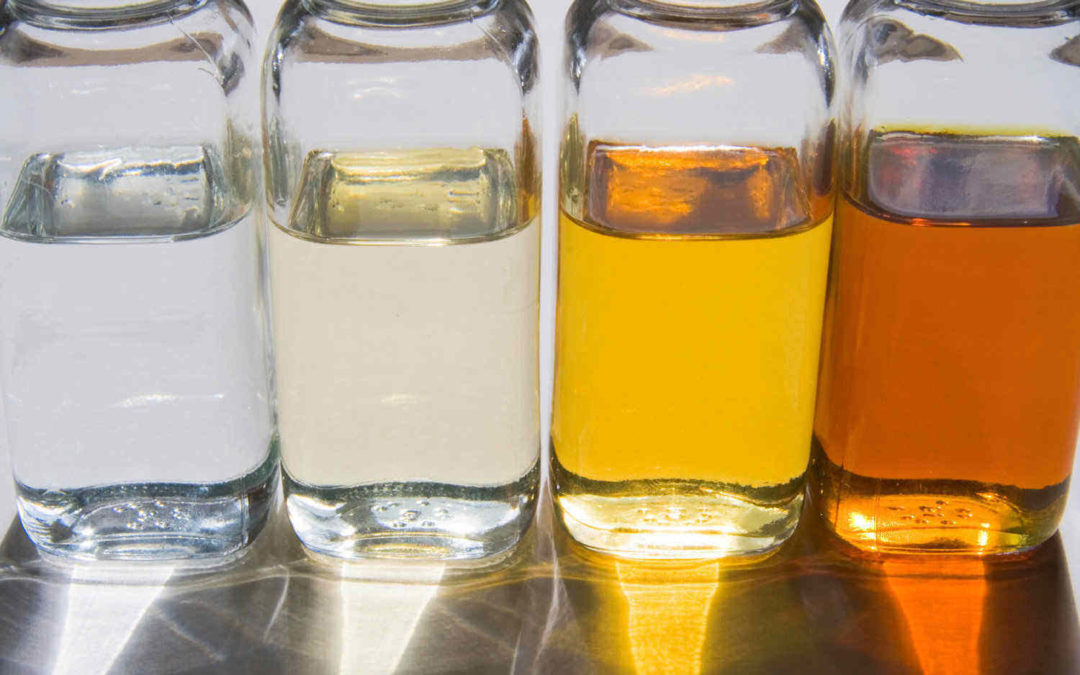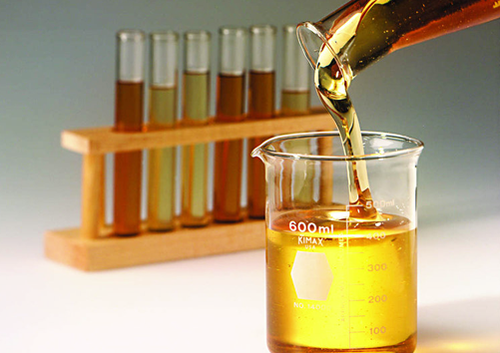Base Oil
Base oil is a type of oil which is used as a base for lubricants. The main element of lubricants (volume wise) is base oil and it forms about 95% of lubricant’s weight. In some lubricants (Compressor and hydraulic oil) 99% of the oil is consisted of base oil and only the 1% which is left contains additives. Base oils can be reached from oil based and non-oil based resources. Most of the base oils used in the world are obtained from crude oil refining. Most of the compounds which form base oils are Paraphinic, Naphthenic and aromatic compounds.
Base oil’s chemical properties and their impact on the usage of final lubricant:
1 volatility: reduction of the oil, oil thickening, sediments
2 surface activity: foaming, pressure tolerance, air release, emulsion expansion
3 oxidations: sediments, oil thickening, metal oxidation, mud forming
4 Viscosity: Fluidity in lower degrees, energy waste, abrasion protection, proper cooling
5 being soluble: Motor neatness, sealant compatibility, process applications, formulation sustainability The base oil which is extracted from crude oil is called mineral base oil which is categorized in two types (Paraphinic and Naphtshic). Paraphinic oils are consisted of normal hydrocarbons and Iso hydrocarbons. Naphthic oils are consisted of annular full hydrocarbons. Paraphinic oils have certain attributes in comparison with naphthic oils such as;
• More shedding temperature
• Less special weight
• More viscosity indicators
• Less solubility property
• Higher resistance against oxidation
• Higher flash point
Mainly naphthic oils are needed for less temperature criteria and pour point specially; hydraulic oils, coolers, rubber producing oils, metalworking and cylinders’ lubricants for big motors and greases.
Specification
V150
| PROPERTIES | RESULT | TEST METHOD |
|---|---|---|
| Kinematic Viscosity(cst) @40°C | 18 – 20 | ASTM D466 |
| Kinematic Viscosity(cst) @100°C | 3.5 – 3.8 | ASTM D466 |
| Flash point (°C) | 180 – 183 | ASTM D92 |
| Pour point (°C) | 0 – -3 | ASTM D97 |
| Appearance | Clear | Visual |
| Density@20°C | 0.835 – 0.840 | ASTM D1298 |
| Neutralization value | <0.01 | IEC 296 |
| Odor | Odorless | – |
| Sulphur (ppm) | 350 MAX | ASTM D1266 |
| Color (saybolt) | 1.5 – 2 | ASTM D1500 |
V500
| PROPERTIES | RESULT | TEST METHOD |
|---|---|---|
| Kinematic Viscosity(cst) @100°C | 8 – 10 Min | ASTM D 445 |
| Viscosity Index (VI) | 95 | ASTM D 2270 |
| Flash point, °C | 235 Min | ASTM D 92 |
| Pour point, °C | -6 | ASTM D 97 |
| Specific gravity @15.6°C | 0.88 | ASTM D 4052 |
| Sulphur content, (Wt%) | 0.4 | ASTM D 2622 |
| Color | 2 Max | ASTM D 1500 |
| TAN, mg KOH/g | 0.0> | ASTM D 664 |
| Carbon residue content, (Wt%) | 0.12 | ASTM D 189 |
R150
| PROPERTIES | RESULT | TEST METHOD |
|---|---|---|
| Density | 0.850 – 0.870 | ASTM D 1298 |
| Flash point | 170 Min | ASTM D 92 |
| Kinematic Viscosity(cst) at 100°C | 3.5 – 4 | ASTM D 445 |
| Kinematic Viscosity(cst) at 40°C | 40 – 50 | ASTM D 445 |
| Color | 2 MAX | ASTM D 1500 |
R500
| PROPERTIES | RESULT | TEST METHOD |
|---|---|---|
| Density@20°C, Kg/L | 0.880 Min | ASTM D 1298 |
| Flash point, °C | 210 Min | ASTM D 92 |
| Kinematic Viscosity(cst) @100°C | 8.5 – 9 | ASTM D 445 |
| Kinematic Viscosity(cst) @40°C | 7 – 7.5 | ASTM D 445 |
| Pour point, °C | -12 | ASTM D 97 |
| Viscosity Index | 95 | ASTM D 2270 |
| Color | 1.5 Max | ASTM D 1500 |
FREE QUOTE
Do you need help? Fill out this form to get in touch.



